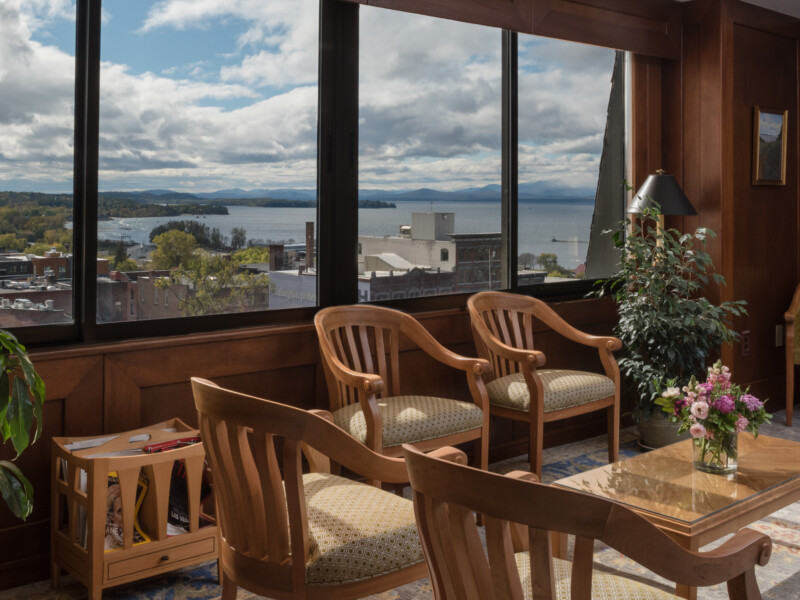
Attorneys Bob O’Neill and Matt Stern won a major land use victory for their client with the Vermont Supreme Court’s recent decision in In re Wagner & Guay Permit. O’Neill and Stern represented a property owner in Grand Isle who received a building permit from the local Development Review Board but faced a permit appeal to the Environmental Division of the Vermont Superior Court and ultimately to the Vermont Supreme Court.
At issue in the case was whether the intended location of a new residence in a subdivision purchased and subdivided by the property owner in 1995 satisfied the conditions of the original permit. The Grand Isle Planning Commission approved the 1995 plat plan, which included a provision intended to keep the rural character of the area. To that end, the plat plan and the resulting permit stated that houses on the lots in question must be built within the tree line.
When the property owner recently received a permit from the Development Review Board to build a new residence on two of the undeveloped lots subject to the tree line condition, an adjoining neighbor appealed the permit on the grounds that the plans for the new residence did not satisfy that requirement. At trial, the Environmental Division heard testimony from three Gravel & Shea witnesses, including the town zoning administrator and an expert engineer. During cross examination by Gravel & Shea attorneys, experts for the neighbor – two of their five witnesses – conceded that the property owner’s interpretation of the plat plan and permit was the more appropriate one. Finding the property owner’s testimony most credible, the Environmental Division ruled in favor of Gravel & Shea and upheld the permit.
The neighbor disputing the permit appealed to the Vermont Supreme Court. On appeal, the Court rejected the neighbor’s assertion that the lower court should have construed any ambiguous language against the drafter. Instead, the Court accepted Gravel & Shea’s argument that the lower court’s interpretation of the permit to satisfy the intent of the drafter was correct. As such, the Supreme Court upheld the lower court’s approval of the permit, and the property owner is now able to move forward with seeking any additional permits and building a house on the property.




